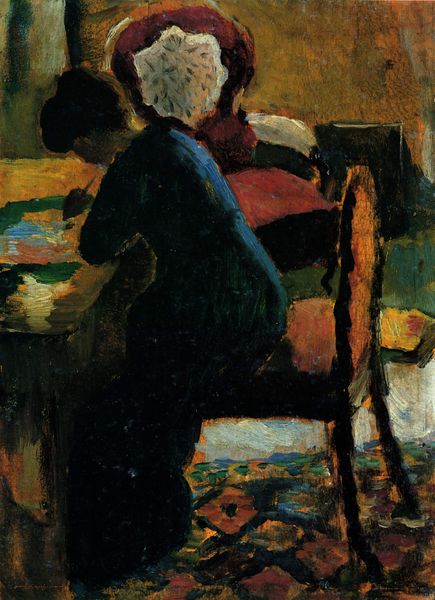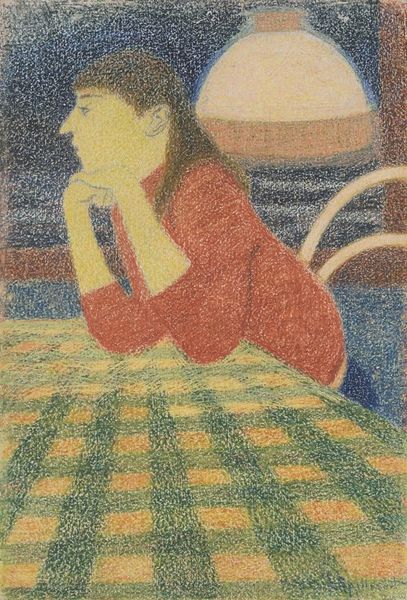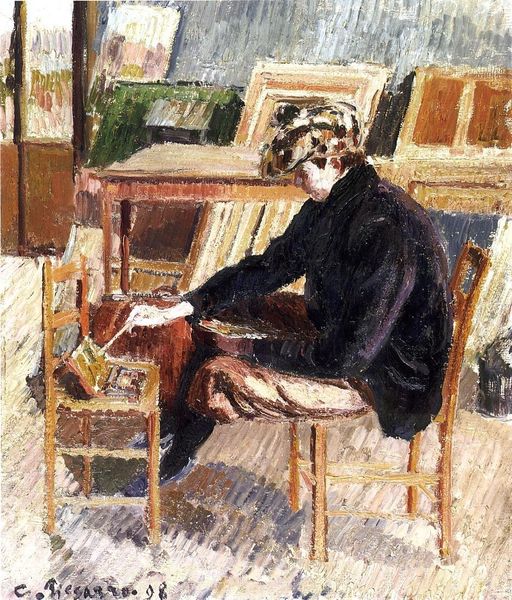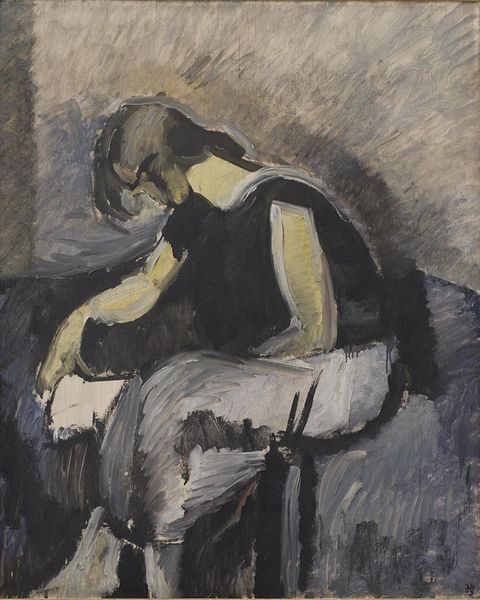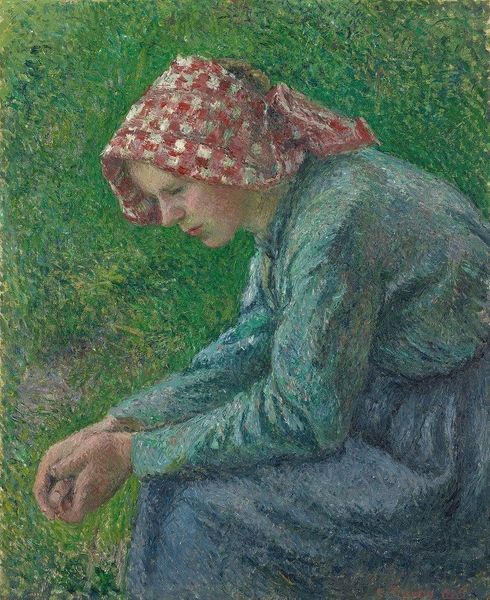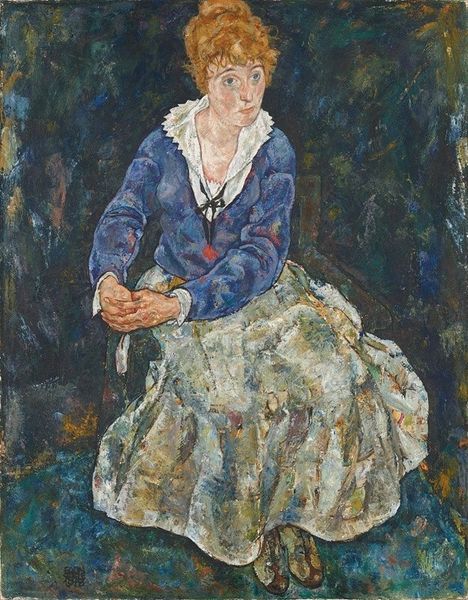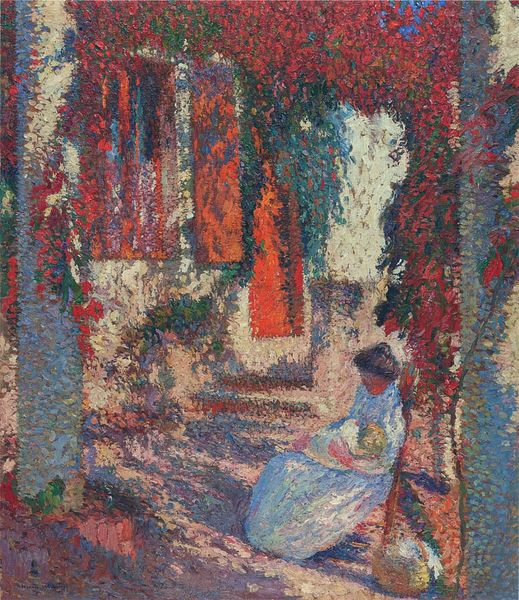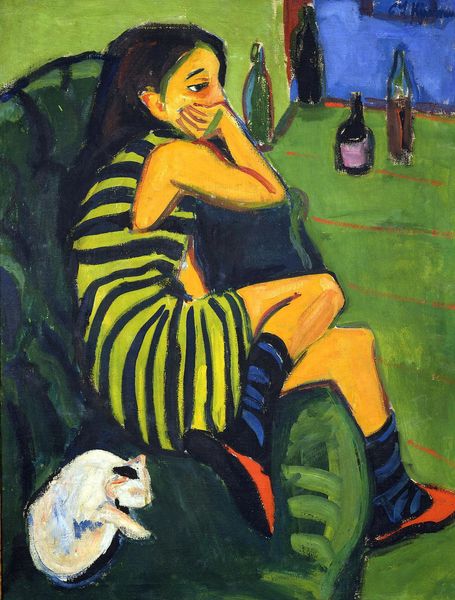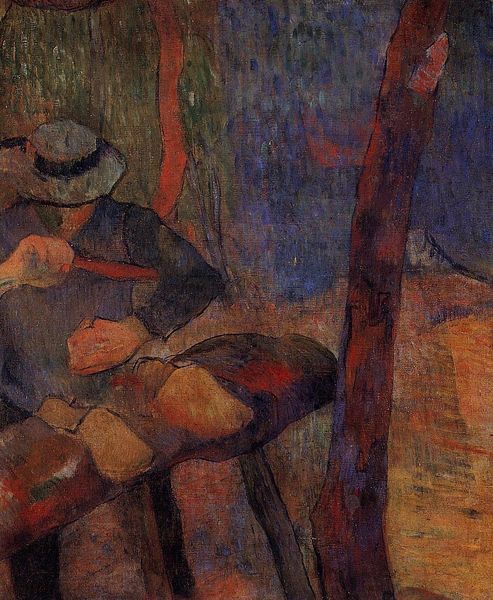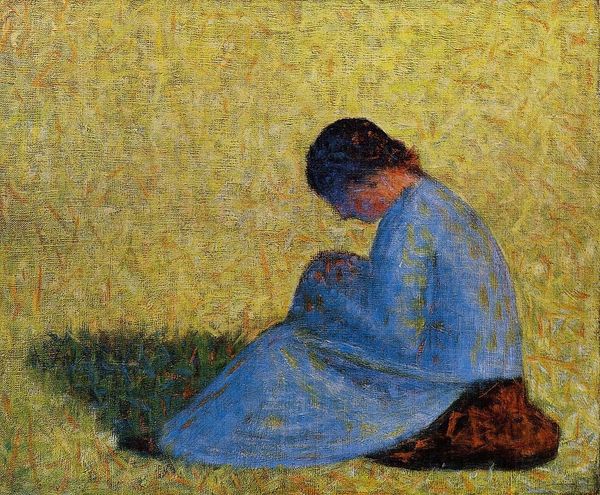
painting, oil-paint
#
portrait
#
painting
#
impressionism
#
oil-paint
#
neo-impressionism
#
landscape
#
painted
#
oil painting
#
child
Copyright: Public domain
Editor: "A Boy with Sailboats" by Henri Martin, made with oil paint... I'm really drawn to how the vibrant, almost pixelated brushstrokes create such a dynamic scene, even with this lone, contemplative figure. What stands out to you when you look at this painting? Curator: What intrigues me is how Martin uses Neo-Impressionist techniques – those distinct dots of colour – not merely for visual effect, but to represent a specific kind of leisure and the democratizing influence of seaside culture at the turn of the century. Think about it: who has access to sailboats and idyllic coastal views? Editor: So, the painting isn't just about a boy and boats, but also about social mobility? Curator: Precisely! Martin often depicted rural scenes and working-class subjects enjoying leisurely activities. The accessibility of coastal life, of owning or even viewing sailboats, reflects broader socio-political changes and evolving class dynamics. Also, consider where this would have been displayed; it's likely destined for a middle-class home, reinforcing a specific aspirational narrative. How does this influence your interpretation? Editor: I guess I see the child not just as an individual, but almost as a stand-in for a larger social group. It definitely makes the piece more compelling to consider its historical audience and the message it was sending about who gets to participate in leisure. Curator: And that's precisely what makes art history so engaging – teasing out the threads of social meaning woven into the visual fabric of a work. It challenges us to consider how artistic representations reinforce, reflect, or even subvert prevailing power structures. Editor: This has really opened my eyes to the painting beyond its surface appeal. I'll definitely approach Impressionist landscapes with more of a socio-historical lens from now on.
Comments
No comments
Be the first to comment and join the conversation on the ultimate creative platform.
